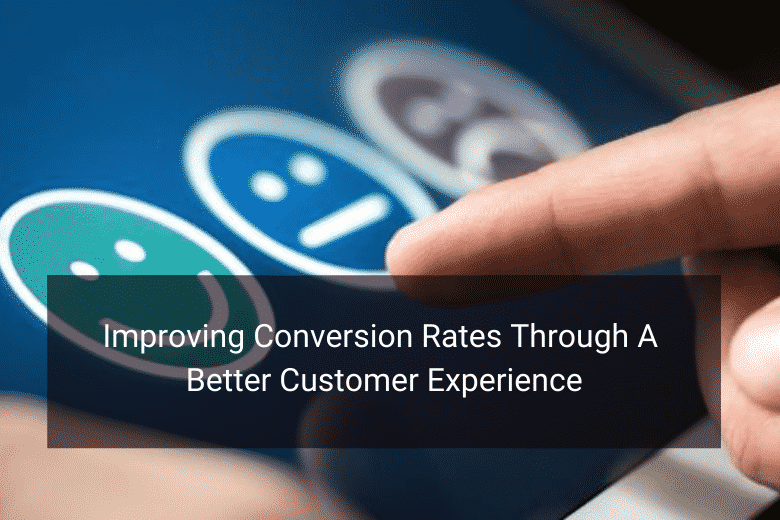When marketers and business owners promote their products they do it with a single goal in mind – converting brand mentions and website traffic into visitors. E-commerce team managers pay a lot of attention to conversion rates – the pace with which a first-time visitor is converted into a customer.
In this post, we will take a closer look at this metric – how to calculate it and set the right benchmarks. Other than that, you’ll be introduced to small yet impactful tips for marketers and WordPress developer teams (you won’t have to find coders to implement them though) that’ll encourage people who visit your store to check out.
What is Conversion Rate in E-commerce?
By definition, a conversion rate in the percentage of website visitors that completed an action a business owner had in mind after visiting the page. Although checking out is a popular conversion point for most store managers, this is not the only goal that can be called a “conversion”.
Marketers use the term “conversion rate” to track the following actions as well:
- Email list sign-ups
- Downloading a promoted material (e-book, white paper, offer, etc).
- Contacting customer support for a consult.
- Adding a product to the cart.
How to calculate conversion rates?
How do marketing managers calculate and capture conversion rates? Here are the standard formula teams use:

E.g. If 10,000 people visit an e-commerce website every month and 100 out of these accomplish the goal a business owner set as a conversion point, the conversion rate for this point is 1%.
What is a good conversion rate?
On a global scale, conversion rates vary depending on the industry a business operates. While global websites have comparatively higher conversion rates (at 4%), e-commerce business owners have a harder time converting visitors into shoppers or brand fans. The average conversion rate in e-commerce is 2% according to statistics.
How do I monitor the conversion rate?
There are several ways for business owners to keep track of conversion rates and understand how well the website encourages prospective buyers to build relationships with brands.
Here are the most popular ways to monitor conversions:
- Using Google tools. Analytics and AdWords are marketers’ go-to conversion-trackers. These platforms have a wide coverage – a business owner can use a pixel to track the conversion of every page. Other than that, Google tools collect a lot of behavioral and demographic data to give business owners contextualized data. Other than monitoring raw conversion rates, you’ll understand what country the bulk of your clients are coming from, which user habits they have, and how to promote these among reluctant website visitors.
- Net promoter scores or custom client satisfaction surveys. Talking to prospective clients and regular shoppers directly is another way to track conversions. Although you will not be able to get as much data as Google Analytics curates, getting person-to-person testimonials from real-life users helps marketers ensure they are not misinterpreting the data provided by analytics platforms.
- Heat map WordPress development. Understanding the way website users interact with the website is an eye-opening conversion tracker. To capture a visitor’s every mouth click or compare the conversion-generating potential of different design versions of the same page, marketers and business owners use heat maps. These show which areas of the websites a user prioritizes and which ones are a blind spot, helping teams find the right button and copy placement.
- Tracking other metrics. Other than conversion rate per se, there are a handful of metrics that help business owners and marketing managers interpret conversion data more efficiently. Interactions per visit (the number of link clicks, scrolls, and other actions an average visitor does on the website), cost per conversion (how much acquiring a customer costs the business in ads and working hours), bounce rate (number of users leaving the page without interacting with it) are all helpful insights that’ll broaden your view on ways to improve conversion rates.
Why Customer Experience Is Important For High Conversion Rates
Multiple factors determine the conversion rate of an e-commerce business – product selection, pricing policy, and others. However, the one with the highest impact and most room for optimization is customer experience.
According to statistics, after optimizing customer experience alone, a company generating $1 billion per year can increase the revenue by $823 million. Thus, the impact of adapting your store to fit customers’ needs on conversion is non-negotiable.
Let’s take a closer look at the benefits of investing time and money in WordPress conversion rate optimization:
1. Higher loyalty to the brand
According to statistics, getting a first-time visitor to make a purchase is 7 times more expensive than re-engaging a regular customer into a new order. To make sure you are strengthening the bonds with your clients, create experiences that will motivate people to stay in touch with the brand.
Here are the tactics that improve a customer’s loyalty to the brand:
- Loyalty programs – gift cards, point-based discounts, and others.
- Continuous support from the company.
- Staying in touch with clients via social media and email, informing them about new tools.
- Positive on-platform experience (fast page loading, intuitive navigation, high WordPress theme customization, etc).
2. Full control over publicity
The e-commerce business owners who miss out on damage control and monitoring customer feedbacks are exposed to dangerous reputation risks. As a matter of fact, it takes 12 positive customer testimonials to cover the traces of a bad review.
It’s also true that most shoppers are more eager to share positive experiences than negative ones. That’s why e-commerce company managers need to invest in outstanding customer experiences to make sure people would be excited enough to recommend the company to their social circle and generate word-of-mouth sales.
3. Reduced decision-making risks and costs of failure
Focusing on customer experiences and feedback helps e-commerce managers make informed decisions in product design, sales, and marketing. A thought-out customer experience strategy offers teams a wide range of opportunities:
- Forecasting a customer’s next purchase based on his activity on the website.
- Predicting shoppers’ objections and addressing them before they affect buying decisions.
- Finding the preferable ways for customers to get product support and leveraging the full potential of these communication channels.
- Determining which products shoppers want to see among the store’s upcoming releases.
4. Fewer customer support calls
If your support team is busy processing tickets and struggles to answer calls and emails, the lack of customer experience strategies might be to blame.
Investing in creating an on-site knowledge base, a FAQ page, and a corporate blog, as well as setting up an email campaign using a WordPress Mailchimp integration is a small yet powerful improvement that frees the hands of your customer support agents and will allow them to focus on increasing the quality of each consult. Other than that, investing in engaging, valuable content helps e-commerce business managers make a powerful presence and get recognition of an industry expert.
5. Creating engaging (and free) promotional opportunities
By jumping on the bandwagon of customer experience innovation, business owners can not only improve the retention of existing customers and maximize the value of each order but facilitate the process of reaching out to new clients.
Both top-notch brands and startups can get extra exposure thanks to improving shoppers’ online experiences. Zara, for example, was praised by Forbes as a people-centric company that focuses on creating next-level customer experiences rather than simply pushing new items out.
If you create an innovative and exciting way for website visitors to interact with the platform, there are decent odds of it being covered in top media websites.
3 Tips to Improve Customer Experience on For E-commerce Platforms
As an e-commerce website manager, you might be wondering whether it’s possible to make a difference in customer experience without paying a dime for innovative technologies or huge teams. The truth is there are plenty of cost-efficient solutions that have a positive impact on customer experience.
Here are our favorite tried-and-true tips that help e-commerce owners retain more website visitors and convert them into shoppers.
1. Setting up a payment gateway
Offering shoppers a way to complete the check-out without leaving the website is a must-have for a converting e-commerce platform. That’s why a payment gateway (an integration with top payment platforms, like PayPal, American Express, or Payoneer) is a must-add feature of an online shopping platform.
As you are setting up a payment gateway, consider following these practices:
- Use encryption and secure plugins to avoid financial data leaks. You can create a pop-up or a space for copy that ensures shoppers their card number is safe from attacks as well.
- Enable international currency conversion. If your platform offers international shipping, make sure shoppers can pay in domestic currencies as well.
- Find mobile coders to optimize the gateway for smartphones – according to statistics, shoppers make 67.2% of all purchases via a smartphone.
2. Create help content
“Help me help you” should be the motto of a successful e-commerce platform. Business owners and marketing managers need to make sure that a prospective customer has all the information and guidelines needed to make a purchase without having to bother customer support.
Here are the types of help content that positively impact conversion rates:
- FAQ page.
- Explainer videos.
- Help center with tutorials that explain how the platform works.
- AI-based chatbot that’ll answer common customer questions instantly.
3. Monitor customer feedback
Converting one-time visitors into customers is a pinnacle of customer experience efforts – however, this is not the final point of a shopper’s journey. To make sure a dissatisfied customer doesn’t bring harm for the store’s reputation, keep a careful eye on tracking client reviews.
- Check social media frequently.
- Send out customer satisfaction surveys and encourage shoppers to feel them in exchange for rewards.
- Monitor feedback on local listing platforms and meet unhappy customers halfway – replace faulty packaging, offer moneyback guarantee, etc.
Conclusion
Acquiring new customers is the reason why e-commerce managers spend so much time and invest a lot of funding in marketing and advertising. However, all of these efforts will be in vain if an e-commerce platform doesn’t offer first-time visitors a smooth, enjoyable experience of order placement and checkout.
Implementing best customer experience practices – setting up payment gateways, creating relevant content, and monitoring customers’ feedback – will help business owners build long-lasting bonds with shoppers.

Ready To Upgrade Your Logistic Solution?
Speak to Floship ecommerce logistic consultant about improving your global support chain today





